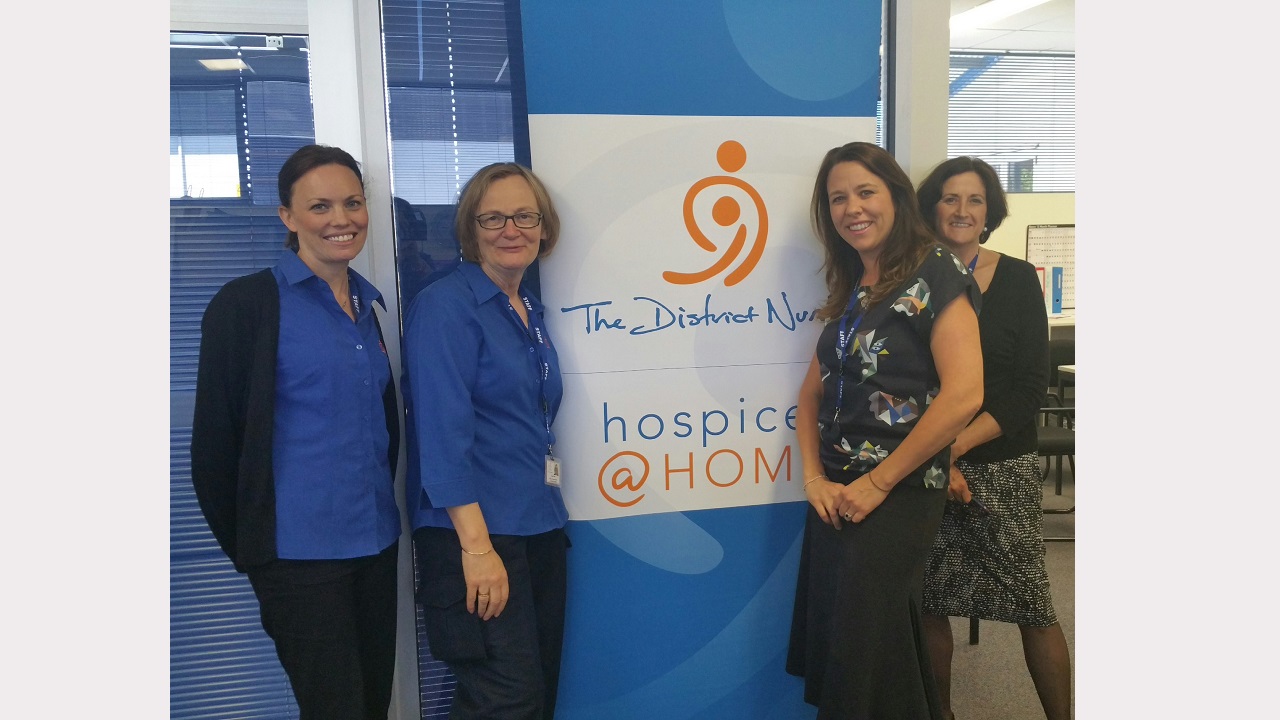Tasmanian program supports people wishing to die at home
Tasmanian program supports people wishing to die at home
Tuesday, February 07, 2017
When two community nurses from Hobart presented at the most recent International Palliative Care Conference in Montreal, they were introduced as having something to share that was of global significance.
The District Nurses staff had travelled to Canada to explain Tasmania’s hospice@HOME program, which identifies and purchases tailored support for terminally ill people who wish to die at home, as well family and friends caring for them.
The District Nurses clinical nurse manager, Helen Jarman, said hospice@HOME had achieved international interest because it had made dying at home a possibility for all terminally ill people living in Tasmania.
“So far, 56% of our patients have chosen to die at home, and we have supported them all to achieve that,” she said.
“Even patients with challenging symptoms can achieve this regardless of where they live. We have supported patients and carers across Tasmania including rural and remote areas.”
Ms Jarman said the four-year Commonwealth Government funded project will finish in June 2017, having achieved delivered more than 2000 packages of care. She said a rigorous monitoring and evaluation process is providing robust evidence of significant cost saving for health budgets.
The program employs registered nurses, social workers and care co-ordinators. They visit patients and their families, working with them to identify the respite and domestic or personal care needs. The program then brokers the physical, emotional, psychological or spiritual support that is required.
One patient with a neurological disease received brokered personal-care services, a massage therapist to assist with pain management and a music therapist to reduce emotional distress.
Ms Jarman said the program also provides support for carers, potentially preventing burnout which could lead to the person they are caring for needing to be admitted to hospital. Support may be required to help carers manage an additional workload, should a patient lose mobility or become incontinent, or so they can maintain their social networks through activities such as golf or bowls. Respite was organised to enable one carer to continue regularly walking their dog.
When services are not available locally, hospice@HOME coordinates them from elsewhere. One family in rural Tasmania received brokered support from local care providers, as well as two carers who travelled 90 minutes from Hobart for three days each week.
“This was more cost effective than transferring the patient to hospital,” Ms Jarman said.
She said hospice@HOME strives to achieve continuity of care. When patients who are receiving aged-care funding packages require extra services, the program strives to use their existing provider.
hospice@HOME also works closely with the patient’s GP. Ms Jarman said when new patients are referred, “we always ring the patient’s GP to inform them, talk about the patient’s prognosis and confirm that the person has a life-limiting illness. Usually, palliative care is very well managed by GPs who play a pivotal role in a patient’s end-of-life care for those wanting to die at home”.
